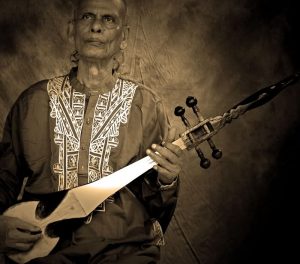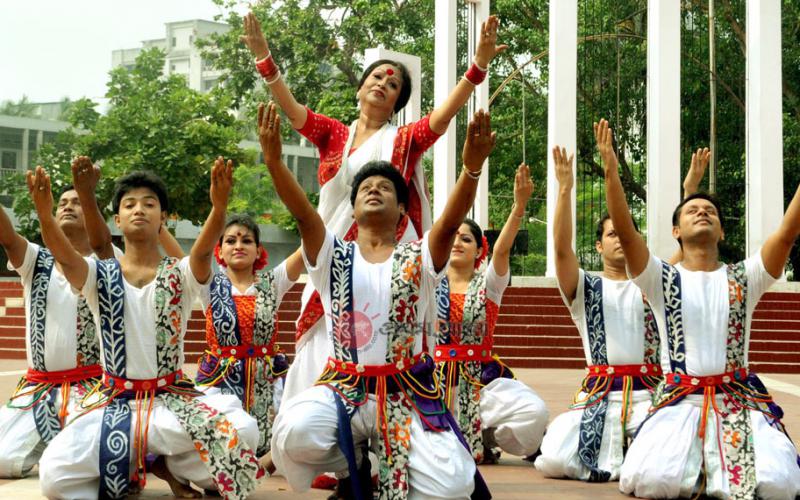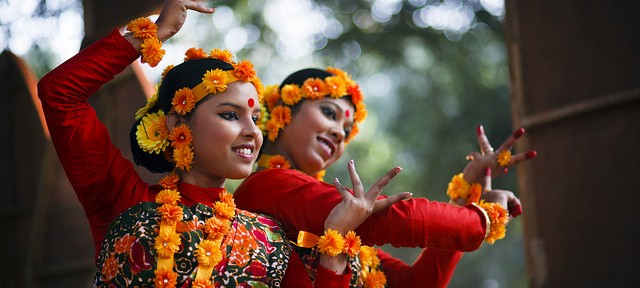Bangladesh has a rich, different culture. Its profoundly established legacy is completely reflected in its architecture, dance, literature, music, painting and attire. The three essential religions of Bangladesh (Hinduism, Buddhism and Islam) have had an awesome impact on its way of life and history.
The people of Bangladesh have a rich imaginary legacy, with the most readily accessible type of writing being over a thousand years of age. Bengali literature grew extensively during the medieval period with the ascent of prominent poets, for example, Chandi Das, Daulat Kazi an Alaol.
Bangladesh is basically a place where there is songs, music and dance. The music of Bangladesh is passionate, elate and sentimental. One can discover mixed bags of songs and music, old and modern, local and western including music instruments.
Local music or melodies accept different names: Classical tunes, Semi-traditional tunes, Palli Geeti or society tunes, Rabindra Sangeet (melodies by Tagore, the Noble Laureate), Nazrul Geeti (melodies by the revolutionary writer of Bangladesh Kazi Nazrul Islam), Religious melodies, Desher Gaan or enthusiastic tunes, Adhunik Gaan or cutting edge Bangla tunes and Gano Sangeet or moving tunes.

The rich tradition of music in Bangladesh can be isolated into three different classes – classical, folk and modern. The tradition of classical music, whether vocal or instrumental, is established in the old history of this subcontinent. It has been developed with incredible tolerance and enthusiasm by dedicated musical performers throughout the hundreds of years. The globally known Sarod players Ustad Alauddin Khan and Ustad Ayet Ali Khan hailed from the soil of this nation.
Folk music, supported through the ages by village poets, is the most prominent and ageless exhibition of music in Bangladesh. Rich in respectful supernatural quality and sentimentalism, people music oozes the real flavor and appeal of the soil. The most extraordinary forms are Bhatiali, Baul, Marfati, Murshidi, Bhaoaiya and Gombhira. A portion of the best examples of our spiritualist and respectful melodies were Lalan Fakir, Hasan Raja and Abbasuddin Ahmed.

Present day Bengali music began from two particular schools. The primary is basically a mix of East and West launched by Rabindranath Tagore. The rebel poet Kazi Nazrul Islam initiated the second, and tried different things with a combination of classical, folk and Middle Eastern musical strains. The contemporary followers of both the schools have been enlarging their extent with new explores.
There are different local musical instruments which are irreplaceable for creating Bangladeshi songs. Among these, the best-known are: Tabla, Behala, Ektara, Dotara, Banshi, Mandira, Sharinda, Mridongo, Shorod, Setar, Tanpura, Esraj, and so forth. The harmonium, however western in birthplace, has been received by musical performers all through the subcontinent.
The specialty of dance in Bangladesh draws uninhibitedly from the sub continental traditional structures and the society, tribal, performance and Middle Eastern strains. Of the tribal dances, especially well known are Manipuri and Santhal.
The Bulbul Academy of Fine Arts (BAFA), set up in Dhaka in the mid 1950s, assumed a spearheading part in the advancement of dance in the nation. Various other social associations have helped in promoting the fine art. No social nighttime in this nation is finished without a dance thing.

Tribal dances are exceptionally famous among the Bangalees. The village young ladies are in the propensity for dancing to famous folk music. Their dances oblige no regulations all things considered, simply a little measure of bravery and an enormous measure of mood. Famous melodies like Shari and Jari are given the going hand in hand with dance of both male and female entertainers.
Drama and theater is an old tradition that is exceptionally famous in Bangladesh. In Dhaka more than twelve theater gatherings have been consistently organizing generally composed plays and those adjusted from celebrated writers, principally of European inception. Mainstream theater gatherings are Dhaka Theater, Nagarik Nattya Sampraday and Group Theater.
In Dhaka, the Baily Road territory is known as ‘Natak Para’, where shows are frequently held. The Public Library Auditorium and National Museum Auditorium are eminent for holding social drama shows. The Dhaka University range particularly around Shahbagh assumes a crucial part in the city’s cultural life. With the late formation of the Academy of Performing Arts in Dhaka this dynamic artistic expression is required to increase further momentum.

Director: Giasuddin Selim
The film of Bangladesh, frequently by and large mentioned to as Dhallywood, has had a noteworthy impact on Asia. Bangladesh has had a huge film industry since the 80’s. Film generation came to an untouched high in 1990, a period alluded to as the brilliant time of Bangladeshi Film. During the 90’s, the Bangladeshi film industry delivered a percentage of the greatest movies ever. Starting 2013, the Bangladeshi film industry earned around $62mn in the local business sector from 120 releases, making Bangladesh the tenth biggest film delivering nation in the world. According to film intellectuals, the Bangladeshi film industry is developing at a quick pace in recent year. 2014 has ended up being a fabulous year for the film business, with “Agnee (Fire)” and “Hero: The Superstar” both being the most noteworthy earning Bangladeshi movies ever. The yearly Meril Prothom Alo Awards, the biggest honors service in Bangladesh, are facilitated consistently. The Bangladeshi film industry has its beginnings with the 1931 generation of Last Kiss; the soonest highlight film ever constructed in what might get to be Bangladesh. However, the first ever screening of movies in Bangladesh began on April 24, 1898 by Bradford Bioscope Company at the Crown theater close Dhaka harbour. Commercially effective Bangladeshi movies have included Tojammel Haq’s The Gypsy Daughter, AJ Khan’s The face and the cover, Giashuddin Selim’s Monpura, Ashiqur Rahman’s Kistimaat and Iftakar Chowdhury’s Agnee. Bangladeshi Film Industry is the second biggest film industry in South Asia after Bollywood and starting 2014, it is the ninth biggest in Asia terms of income.
Source: Bangladesh.com, independent-bangladesh, Wikipedia

Leave a Reply